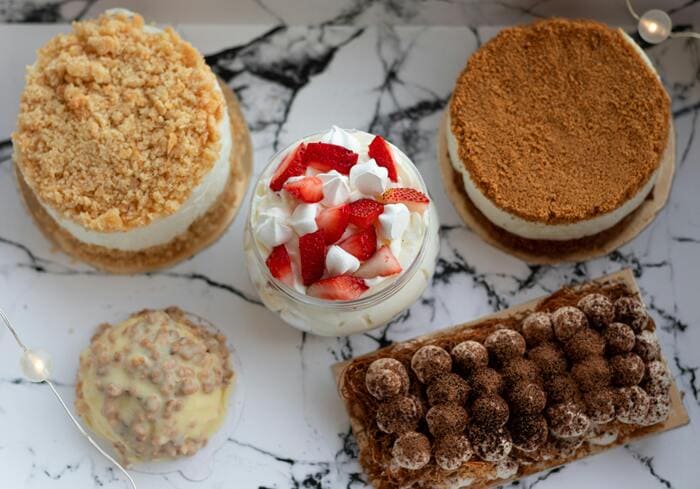Creating beautiful cakes is an art, but building a cake menu that consistently sells throughout the year is a business strategy. As a home baker or cake business owner, having a smart, flexible, and seasonal menu can make the difference between occasional orders and regular, profitable sales. Your menu is more than just a list — it’s your brand identity, your sales pitch, and your growth engine. In this article, we’ll explore how to structure a cake menu that keeps customers coming back month after month, season after season.
Why Your Cake Menu Matters
A well-crafted menu helps you: attract the right audience, make ordering easier and faster, control inventory and reduce waste, showcase your creativity and specialties, and increase repeat business with seasonal promotions. Whether you’re just starting or revamping your offerings, your menu should reflect what you do best — and what your ideal customers want most.
1. Define Your Core Cake Offerings
Start by identifying 5 to 8 signature cakes you’re known for — the ones that represent your flavor and style. These should be crowd-pleasers that are reliable and easy to execute, visually appealing, profitable, and adaptable to different decorations or sizes. Examples might include: Classic Chocolate Fudge Cake, Vanilla Bean Celebration Cake, Lemon Raspberry Drip Cake, Carrot Cake with Cream Cheese Frosting, Red Velvet with White Chocolate Ganache. These will form the backbone of your year-round offerings.
2. Organize by Occasion or Category
Structure your menu around how people shop. Organizing by event makes the ordering process intuitive. Categories to consider: Birthday Cakes, Wedding & Anniversary Cakes, Kids’ Cakes, Smash Cakes, Corporate Cakes, Vegan / Gluten-Free Options, Seasonal Specials. Each category can feature your core cakes with variations in size, decoration, and theme.
3. Offer a Mix of Sizes and Prices
Clients have different budgets and needs. Offer options like 6″ cakes for intimate celebrations, 8″ cakes for family events, tiered cakes for weddings or big parties, and mini cakes or cake jars as affordable options. This tiered pricing strategy helps serve a broader market and encourages upsells.
4. Embrace Seasonal Menus
One of the smartest ways to boost year-round sales is to rotate your offerings with the seasons. People are more likely to order when they feel your product is “fresh” or limited-time. Examples: Valentine’s Day – Heart-shaped chocolate cakes, strawberry drip cakes; Easter – Carrot cakes with pastel buttercream; Summer – Lemon blueberry naked cake, mango passionfruit; Fall – Pumpkin spice cake, apple cinnamon layers; Christmas – Red velvet snow cakes, gingerbread and molasses layers. Promote seasonal menus in advance to create urgency and excitement.
5. Highlight Bestsellers and New Releases
Your menu should guide the customer to what’s popular or profitable. Use phrases like: “Customer Favorite”, “Best Seller”, “New This Month”, “Limited Edition”. This not only helps indecisive clients choose faster but also creates momentum around specific products.
6. Keep Descriptions Clear and Tempting
Each item on your menu should have a short, mouthwatering description. Use sensory words, emotional appeal, and clarity. Instead of: “Vanilla Cake with Chocolate”, try: “Fluffy vanilla sponge layered with rich Belgian chocolate ganache and a silky chocolate glaze”. Let your words sell the experience.
7. Use Photos Wisely
Great visuals convert sales. Include high-quality images of each cake or, at minimum, your top sellers. Tips: natural lighting and clean backgrounds, avoid cluttered or dark photos, showcase cross-sections when possible (interior layers look amazing!), use consistent image dimensions and style. Don’t have a photo for every product yet? Use mockups or indicate “sample image” and prioritize adding real photos over time.
8. Make It Easy to Order
Include clear call-to-actions like: “Order Now”, “Pre-order for Mother’s Day”, “View Full Menu with Pricing”, “Custom Orders Available”. Provide simple options for contact (email, WhatsApp, form), lead times, and payment methods. You can also link to a Google Form or order page from your social media bio.
9. Create a Printable or Shareable Menu
Having a menu in PDF format or image form allows you to: send it quickly via WhatsApp or DM, post it to Instagram Stories, print and distribute locally, upload to your website. Keep it updated monthly or quarterly, and add branding (logo, colors, contact info).
10. Review and Refresh Often
Don’t let your menu go stale. Revisit it every 3 to 4 months and ask: which cakes sold well? What didn’t get much interest? Are there trending flavors I can add? What new designs have I mastered? Refreshing your menu keeps your brand dynamic and exciting.
Bonus: Create Menu “Bundles” for Profit Boosting
Bundles or packages are a smart way to increase order value. Examples: “Birthday Bundle” – 8” cake + 12 matching cupcakes; “Tea Time Pack” – Mini cake + 2 cake jars; “Wedding Set” – Tiered cake + groom’s cake + delivery. Clients love easy solutions, and bundles simplify decision-making while boosting your income.
Final Thoughts
Your cake menu is a living document — not just a list of flavors, but a tool to showcase your artistry and build a thriving business. When it’s thoughtfully structured, updated with the seasons, and designed with the customer in mind, your menu becomes your silent salesperson, working for you 24/7. In the next article (#44), we’ll explore how to take better photos of your cakes for social media — a key part of selling your delicious creations effectively.
